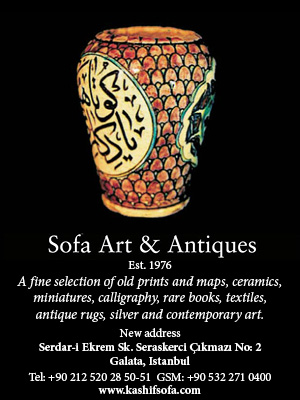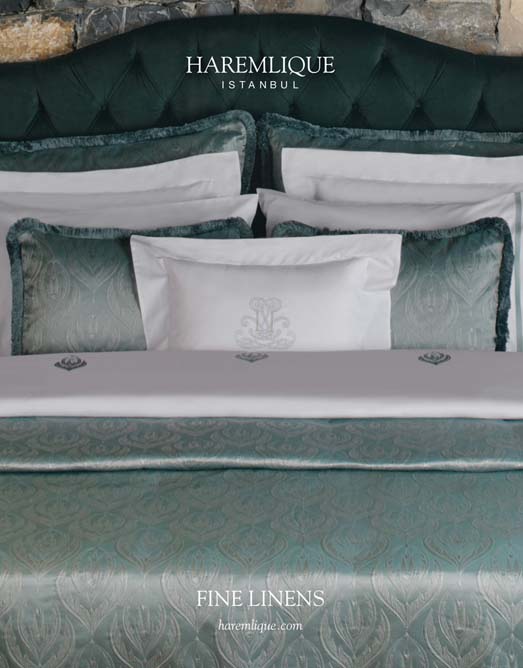The Korean pianist Yeol Eum Son gave a recital of works by Chopin and Rachmaninov at the the Seed, the concert hall attached to the Sakıp Sabancı Museum in Emirgan, on May 11. After last month’s recital, given by Stephen Kovacevich with a dreadful cold, it was a relief to see that this month’s performer appeared to be in the best of health (time to say “Mashallah”).
As I noted in my overview of this season’s Istanbul Recitals, Ms Son (born in South Korea in 1986) is famous for her ‘graceful interpretations, crystalline touch and versatile, thrilling performances’. Currently based in Hanover, where she once studied with Arie Vardi at the Hochschule für Musik und Theater, she took second prize in the Van Cliburn Competition in 2009 and in the Tchaikovsky Competition in Moscow in 2011. Here is a short video in which she describes her early life:
And now a much longer video about her in which the interviewer pronounces her name several times in the first few minutes; it sounds completely different from the way it is spelt, but at least the part where she tells us that ‘Yeol-Eum’ means ‘blooming’ or ‘bearing fruit’ is perfectly comprehensible:
Yeol Eum Son is a Taurean (it was her birthday on May 2) and no doubt enjoys the benefits of her astrological sign’s robustness. Bulls, of course, have a reputation for being fond of their repose, and for being unwilling to bestir themselves when their more bouncy friends jump up all of a sudden to go on one of their silly safaris (silly, that is, in the eyes of the Taurus person). In the interview above she admits to being lazy when not actually at the piano. She must, however, have spent a fair amount of time at the keyboard to have acquired such a formidable technique, and bullish determination to succeed must have helped her keep on keeping on when a less committed person’s enthusiasm for those endless scales, arpeggios and exercises would have flagged.
Ms Son began her recital with Chopin’s Nocturne Op. 27 No 2 in D flat major, composed in 1836. She was obviously determined to give a restrained performance, and indeed it was sometimes so restrained as to be scarcely audible. It was however, agreeably feminine in its understatedness, and there was lots of rubato. As luck would have it, there is a YouTube video of her playing this very piece:
The circumstances surrounding the composition of this nocturne, which was dedicated to Countess Apponyi, wife of the Austrian Ambassador in Paris, are described in this article by Georg Predota on the Interlude website (there is a video of Nocturne No 2 being played by Evgeny Kissin if you scroll down far enough).
The Countess was known as ‘the Divine Thérèse’, and it is said that when she heard of Chopin’s death she cried for the first time in her life. The Apponyi family are Hungarian aristocrats who have been prominent in their country’s political life since the early 19th century. Apponyis have popped up in the most unlikely places, and even have a Turkish connection, albeit an indirect one: Géraldine Apponyi de Nagy-Apponyi (1915–2002) was queen consort of King Zog of Albania, who ruled his country from 1928 to 1939. King Zog, formerly known as Ahmed Muhtar Zogu, was in fact the son of an Ottoman provincial governor of Mati (northeast of Tirana) by the name of Cemal Zogolli Pasha. Having received his primary education in Manastır (now known as Bitola – the town whose military high school Mustafa Kemal attended), in 1906 young Ahmed transferred to Galatasaray High School, and remained in Istanbul until 1911. But the Turkish connections do not end there: Princess Seniye, one of his sisters, married Mehmed Âbid Efendi, the youngest son of Sultan Abdülhamid II, and for a time the only aeroplane in the Albanian Air Force’s possession was flown by none other than Mehmed Orhan Efendi, a grandson of Sultan Abdülhamid’s via this latter’s second son Mehmed Abdülkâdir Efendi. After King Zog was forced to flee his country when the Italians invaded it in 1939, he and Géraldine sought refuge in Egypt, where they frequently met up with members of the exiled Ottoman family. Here is an article that tells the story of their backgrounds and subsequent married life.
Before I return to the concert on May 11, I cannot resist sharing with you this charming black-and-white video of the wedding of King Zog and Géraldine Apponyi in April 1938. Watch out for the flypast by the single aeroplane at 01:36 and its reappearance at 01:45. I cannot say for certain whether or not this plane was flown by Orhan Efendi – who was, by the way, an accomplished pilot (when in Paris, he would impress bystanders with his daredevil aerobatics at the Villacoublay Airfield) – but as Commander of the Albanian Air Force he would probably not have handed over the controls to anyone else on such an important occasion. Anyway, at this distance it’s difficult to see who is in the cockpit:
With many apologies to Yeol Eum Son for the long digression, I will now return from the skies over Albania on April 27, 1938 to the concert hall in Emirgan.
After a somewhat timid start with the nocturne, Ms Son got stuck into the serious stuff with a powerful rendition of Chopin’s Piano Sonata No 2 in B flat minor. There was certainly no holding back in her playing here: if I say she gave a solid, muscular performance (as befits a Taurean) I do not mean that it lacked sensitivity – just that she has the oomph and the stamina to lay it on thick when fortissimos are required (which they often are in this piece). I also noticed that although somewhat petite, she can stretch a tenth – an octave plus two more notes – quite comfortably.
A slight niggle: Ms Son did not seem entirely comfortable in the ritardando parts of the earlier pieces on her programme (I mean the bits where the composer tells you to slow down temporarily). By the end of the sonata, however, she had gained sufficient confidence to time these sections in whatever way the spirit moved her (always a good idea, this, when you’re playing a ritardando). Anyway, no problems of this kind were apparent in her magnificently elated and elating (if that’s a word) performance of Chopin’s Scherzo No 2 at the end of the first half – but more of that anon.
No videos are available on YouTube of Yeol Eum Son playing Chopin’s second piano sonata, but here is a video of both Pogorelich and Fialowska playing it, with the score:
At this point, I will make an admission: in the 1980s I sometimes rehearsed singers preparing for the Christmas and Easter pantomimes put on by the British community in Istanbul, and provided occasional piano music during performances. In those happy days when the two-storey building that housed the British Consulate’s visa section had still not been blown up, and the first floor of this building did service as a bar for ex-pats, the pantomimes were held in the consulate’s ballroom. (The visa section stood on the left of what was then the main gate, opposite the entrance to the Fish Market, and on a sunny day in November 2003 a white van drove in through the gate and blew itself up, with the result that the visa section became a hole in the ground. The Consul-General, Mr Roger Short, was killed; his wife, having slipped out to buy some coffee, survived. Mr Short’s secretary, Lisa, a girl from Denton in Tameside who also died in the blast, was a school friend of my sister’s next-door neighbour.)
In the 1980s the consulate's ballroom housed a respectable grand piano, and during preparations for the Easter pantomime in 1982 I played the second movement of Chopin’s Sonata No 2 – the Funeral March – on it. The significance of this act will become apparent if you ask yourself what else was happening in April 198 … And so I remember all those who died – Turks as well as Brits – in the consulate bombing, as well as all those who died – Argentinians as well as Brits – in the Falklands War. Ruhları şad olsun – may their souls be happy!
Once again, back to the recital. The first half ended with Chopin’s Scherzo No 2 in B flat minor. Ms Son really enjoyed playing this, and there were frequent poutings of the lips to show how much she was engaging with the piece. This kind of commitment always makes for a good performance, and she was not the only one who got off big time on this heady infusion of joie de vivre: for me, it was the highlight of the whole concert.
Here are performances (firstly) by Arthur Rubinstein, with the score, and (secondly) by Evgeny Kissin:
Now, a description of the work by Mieczysław Tomaszewski on the Internet Chopin Information Centre website provided by the Fryderyk Chopin Institute. Mr Tomaszewski observes that this scherzo ‘is unfurled with such force, with such an emotional charge, as if it were about to break through that framework and fall from the tracks along which it is travelling’. Right on!
The Scherzo No 2 is very much a young man’s work (Chopin was well into his 20s when he wrote it, but my point still holds). In this respect it puts me in mind of the first movement of Mendelssohn’s String Octet in E flat major, written when the composer was a mere stripling of 16. If you aren’t already familiar with this work, a wonderful masterpiece of youthful exuberance. I recommend that you get to know it.
The second half of Yeol Eum Son’s recital was devoted to Rachmaninov’s Thirteen Preludes, Op 32. The pieces were apparently composed during two weeks in August and September 1910, following Rachmaninov’s return to Moscow from the United States, where he had been on tour. How he managed to put all those notes on paper in such a short time beggars belief: there are, to put it mildly, a lot of them. (No one ever gives composers credit for the time they spend laboriously writing out every single note of what they have in their heads. Fast pieces, in particular, are a killer: you spend hours writing out a passage lasting 30 seconds.) But somehow, it seems, he managed it. And indeed, Yeol Eum Son managed to play what he wrote – with great skill and panache, and many backwards-and-forwards tosses of her long hair as she it gave her all in the appassionata bits. (She must have had trouble seeing the keyboard when those long brown tresses swept over her eyes.)
I have to say that I am not overly enamoured of Rachmaninov’s music of this period: I find the harmonic diet somewhat unsatisfying, and wish he would either do a Debussy or a Scriabin and go the whole hog towards an entirely new harmonic idiom, or stick with chords of a more conventional variety. There is a coldness there that prefigures Prokofiev, but stops short of taking you straight to the Plains of Mordor (something Prokofiev does in his so-called ‘War Sonatas’). It is a harmonic half-way house that leaves you wondering whether you should be secreting melatonin in anticipation of pleasure, or battening down the hatches for a strafing raid.
That said, Yeol Eum Son’s technique was more than equal to the challenges presented by Rachmaninov’s Thirteen Preludes. The most famous of them is No 10, which the composer told his friend Benno Moiseiwitsch (yet another first-rate Jewish pianist from Odessa) had been inspired by a painting by the Swiss artist Arnold Böcklin entitled Die Heimkehr (The Homecoming). Here is a link to the picture.
For serious Böcklin fans, the Wikiart website devoted to his works is the place to go. I particularly like The Isle of the Dead, though it is probably not the best thing to view before retiring to bed on a stormy winter night with a full moon.
But to return to the Rachmaninov – I cannot find a video of Yeol Eum Son playing the Thirteen Preludes, so here is a double helping of them from Rustem Hayroudinoff (a Tartar from Kazan) and Vladimir Ashkenazy, with the score. Below the YouTube version you will find some notes that are at least informative, though I have to say I don’t always agree with the opinions expressed in them:
There are some agreeable touches of Ravel in the second of the preludes (which starts at 01:11 in the performance by Hayroudinoff), and I can catch a hint of Poulenc’s brittleness in the third. Prelude No 10, the one inspired by the painting, starts at 23:33. My strictures on the subject of Rachmaninov’s harmonies in his earlier period do not apply either to this prelude or to No 13 (which starts at 34:37): in both he shows that he can write very successfully while remaining within a more conventional palette. And in any case it is in this mood that he is at his most Russian.
After the rumbustious and somewhat hard-nosed sixth prelude, the audience burst into spontaneous – but premature – applause, and the lights came on. Someone must have thought this was the end of the performance. Ms Son did not lose her aplomb on this occasion, and all credit to her for her sangfroid. Later on, however, she did look briefly over her shoulder to direct a Meaningful Glance towards the people sitting at the end of the front row who had not yet been apprised of the fact that at a concert of classical music one does not engage one’s neighbour in conversation, still less get up and walk around. Some time after this incident, a lady sitting to my left thought fit to lift her mobile telephone heavenwards and take a photograph using the flash. By this time, though, Ms Son must have become inured to the innocent foibles of her Istanbul audience, and did not react in any way.
Inviting Yeol Eum Son to play in Emirgan was undoubtedly a good decision on the part of Mr Mehmet Şükûn and Ms Nazan Ceylan, organisers of the Istanbul Recitals. Once again I must thank Ms Ceylan for providing me with a seat from which I could see every twist and twitch of the pianist’s fingers. (And by the way, Ms Son’s lip movements were an entertainment in themselves. She has a rare combination of raw power and emotional intelligence, and when the latter takes over she mouths kisses at the keyboard.) I note from the programme that the next concert in the series is to be given not by Anna Tsybuleva, as originally planned, but by a Mr Jeung Beum Sohn. He is scheduled to play Bach, Tchaikovsky, Beethoven, Scriabin and Liszt on June 14.










